When home brewing beer, it is important to keep a constant and cool temperature. I like to aim for around 19 degrees C (66F) for ales (references) and 4 degrees C for lagers but in New Zealand the general yeasts sold or packaged with kits for lagers are really ‘lager style’ top fermenting (ale) yeasts; also I don’t have the budget or equipment to go for a lager style ferment anyway.
So I wanted to build something that would smooth out daily temperature variations and could potentially have some temperature management (eg peltiers in the summer, incandescent light bulbs in the winter) to assist in smooth and appropriate temperature management.
Total Cost: $2
Tallboy: Recycled
Scrap Wood: Recycled
Polystyrene: Recycled (Sometimes you can find large sheets on the roadside in industrial areas)
Masking Tape: Already had a roll.
Screws: Already had
Adhesive Insulating Foam Tape: $2 a roll
Hinges: Already had
Tools Needed: Screwdrivers, Drill, Hammer, Torch or other light source
I had a tallboy waiting to be junked so I removed all the drawers, stripped the front panel off them and attached them together to form a solid pseudo wall/door. I also drilled a 8cm hole and installed a fan although currently I am not using it.
After creating the front ‘door’ I removed the drawer sliders, mounted it on hinges, and placed a small block on the bottom of the door so it would fit into the cabinet and stay closed. Then I glued polystyrene to the sides, floor, roof and back panel. The back panel sheet is on the rear of the cabinet otherwise there would not have been enough room for the fermenter.
I did the torch test (put a light inside and close the door, if you see light there is a leak) and found quite a few flaws. I also thought that there might be some problems with gaps between the sheets in the corners etc so used duct tape to try and seal it up a bit. I also got some door seal padding strips and lined the door where it was appropriate.
The twisted pair cable you see in those pictures is the temperature probe to test the effectiveness which I graphed and will explain here.
This is the raw temperature data for 20 days from 4 probes. (The second graph is of the same data but only 4 days so you can get a better idea of what happens on a day to day basis)
One is on a shelf to the side of the the cool-box, one is inside the cool-box, another one is on the floor just outside the cool-box and one is outside.
Some obvious things to note is
- Purple (outside) has a very large variation and has some quite significant drops as you might expect. The probe is subject to direct sun, wind and any other environmental factors.
- Blue (shelf) is basically right next to the computer recording the data, although the exhaust fan is on the other side and blowing the other way. It currently can get direct sun for a few hours though, and as it is higher I would believe that it is subject to generally higher temperatures as heat rises.
- Green (floor outside cool-box) is, except for the cool-box, the least affected by direct sun. and being on the floor should generally be the lowest of them all, although there is still some large variations
- Red (Cool-box) is the smoothest of them all, although it is noticeably but only by a little bit, higher in temperature than some other probes most of the time.
This graph shows how much time is spent in the optimal temperature zone (16-21 degrees c) and how much time is in the extremes. Outside and garage probe 1 are in the red quite a bit as you would expect. Surprisingly, garage probe 2 spends the most time in the optimal temperature, and almost no time in the extremes. This is good as this is about where I plan to have an air intake to cool the box should its internal temperature be higher than the external temperature.
So far the project is a success, but I need to install either an internal cooling system, either by peltiers & light bulbs or possibly using mains water to cool the box. Over winter I may use a relay switched heating pad to maintain an even more constant temperature. Although this assumes it’s going to be too cold in there of course.
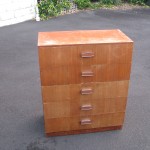

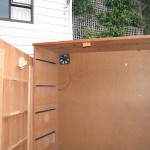

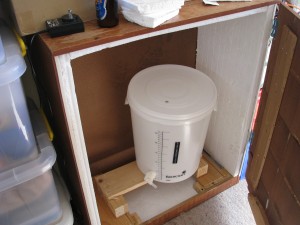
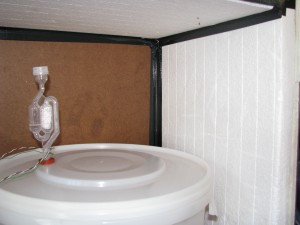
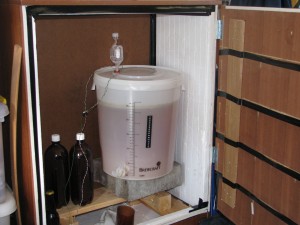

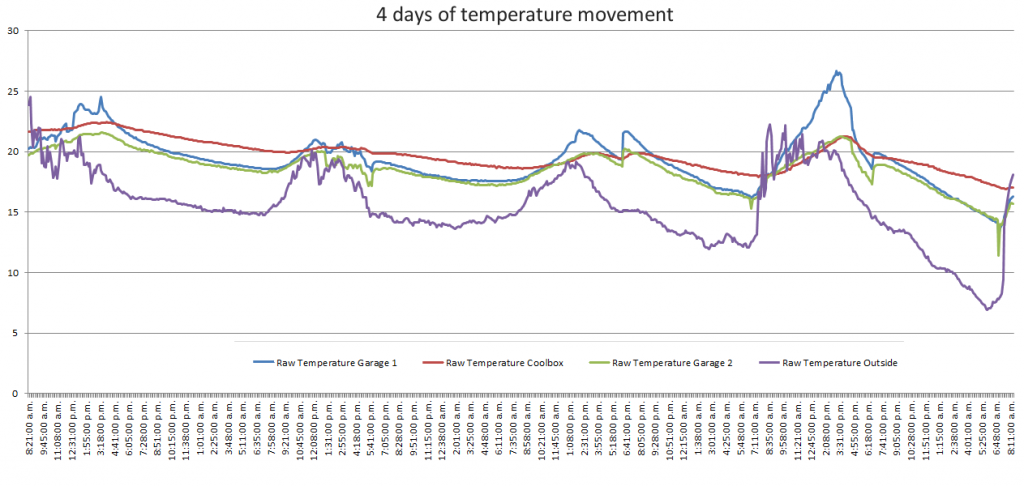

I think you are amazing! So clever.
Totally agree – an old laptop would do the trick. I haven’t heard of a K145 before, are they pretty easy to source? For me the Arduino opens up a few possibilities such as wireless (380Mhz for example) transmission of temperatures (or whatever data) back to a central board which is connected to a router. I found an Arduino nano on Dealextreme for a very reasonable amount too. Although sometimes I think I must like the project more than the end result, as this is going to take some work.
Nice work!
Happy to see technology used for a noble pursuit.
Seems that some polystyrene on the outside of the back of the tall boy would help stabilize the temp profile and give you better isolation from the garage.
Great use for a data logger though. I guess the real proof is in the pilsner.
How has temperature stabilization improved the product?
I’m just an interested novice. Thanks.
Hi Laser, Thanks for your comments. I think the reduction in temperature fluctuations would have improved it, it is hard to be sure as I wasn’t very scientific about the testing. Overall I think this would have been better with something for cooling and thermostat. I found a cheap freezer on freecycle and have been using that ever since. much better isolation and built in cooling! 🙂